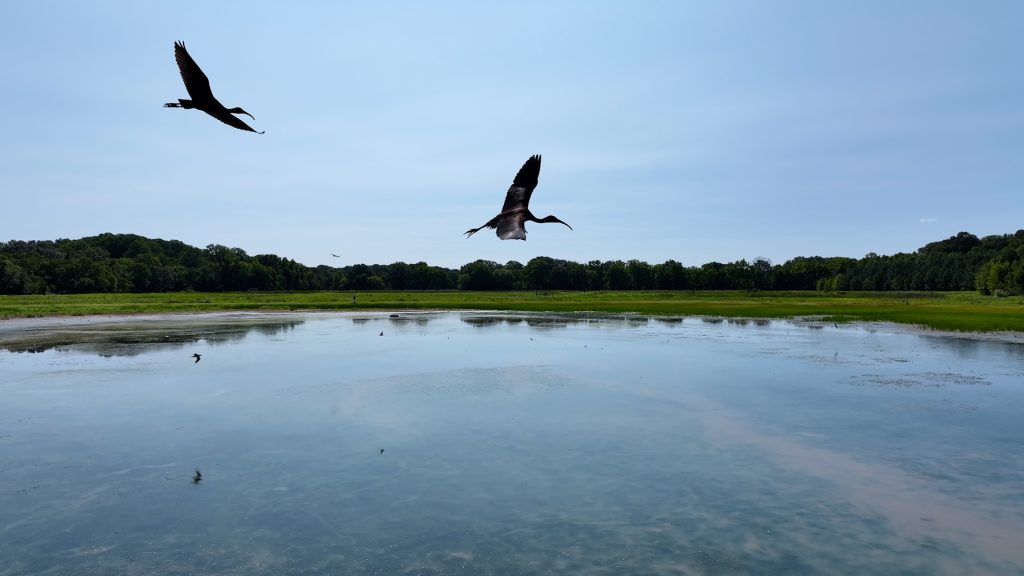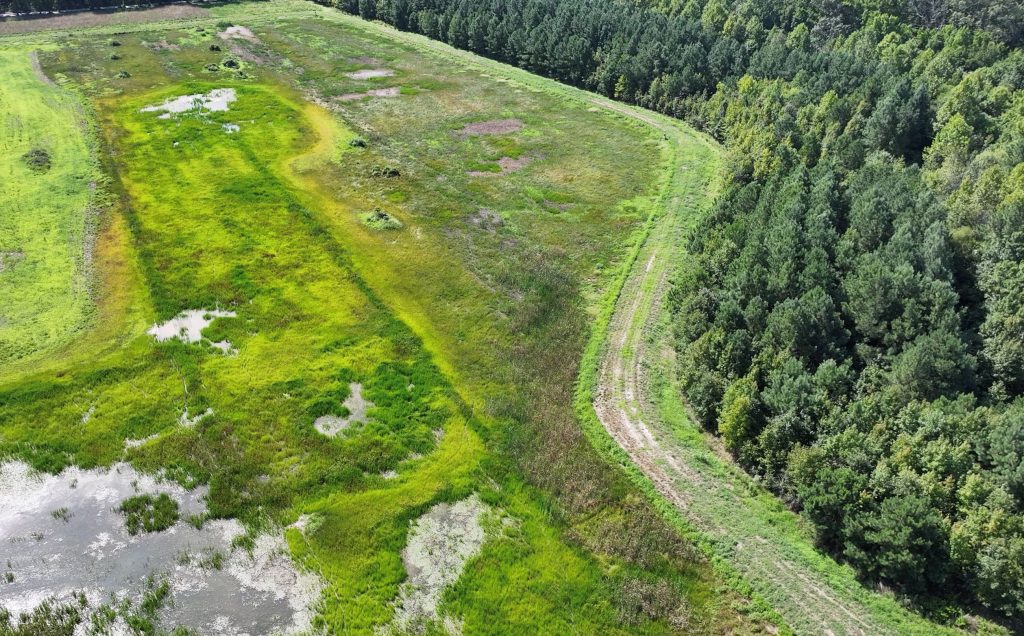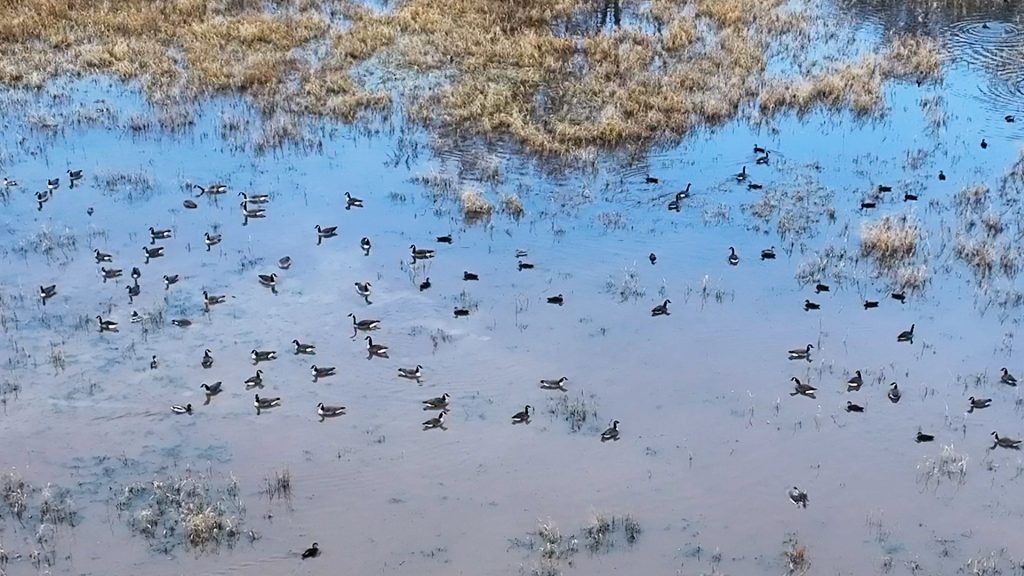The restored wetlands on the island of Wew provide lively habitat for water birds
The east coast site maintains rest and acts as a “large green sponge” filtering water

The shiny Ibises and other water birds fly over restored wetlands in the Wye Island Natural Resource area. Photo by Winn Brewer, Maryland DNR
A few years ago, the land around the Holly Tree trail on Wye Island was all agricultural fields.
But now, just a few steps in the path, visitors can hear the charlatans and flames of hundreds or sometimes thousands of ducks and geese. During winter migration, several wet areas attract sandstones, purple galinules, greater yellow, killers, shiny ibi and many other water birds.
The Wye Island Natural Resources Management Region, not far from the Chesapik Bay Bullet in the County of Queen Ann on the east coast, is home to restored wetlands that maintain a thriving community of birds, in addition to the wildlife. S
https://www.youtube.com/watch?v=uhatbor5fu4
The Ministry of Natural Resources in Maryland, the non -profit goal of protecting non -profit purpose and other partners have restored nearly 50 acres of wetlands to several sites on the island of We in the last 30 years. The island was used mainly for agriculture from the colonial era, when farms in the area produce tobacco and wheat, and today the area of natural resources management on Wye is a popular destination for hunting and monitoring birds.
The most work, completed in 2021, transforms agricultural fields into 23 decares emerging wetlands and another 2.5 acres of buffer zones of wetlands. The project was funded by $ 113,056 from the Cheesapeake Trust Fund and Atlantic Coastal Bays of the department and an investment of $ 90,424 from Ducks Unlimited. Ducks Unlimited is coordinated with several units of the department – Cheesapeake and Coastal Service, Maryland Park Service and Wildlife and Heritage – for planning and designing the project.
This restoration was building similar projects on four sites of a total of another 25 acres of restorations of wetlands that have occurred on the island of WE from the 90s.
“We take out those areas that have been a struggle for decades and become only a less farm with our changing stormy cycles and return them to what Mother Nature wants to be,” said Sarah Hilderbrand, a senior restoration of a DNR specialist.

Air view of part of the wet zones restoration project completed in 2021. Photo from Winn Brewer/DNR
DNR Game bird biologists have helped to stimulate the most project when they noticed that the natural resource management area has more land that can be converted into productive wetlands. Other DNR units and Ducks Unlimited were quickly aboard the effort.
“We have switched from the idea of financing design and construction, until completed within 12 months,” says Josh Homak, leader of the Game Game Play section of the departmentS “This does not happen unless you have much entrance from all partners.”
In order to build these wetlands, the department and its partners have introduced subcontractors to dig areas of land that will turn into ponds, using the dug land to create bermes or raised embankments at the edges. The water control system allows the department to retain water in the reservoirs, release water at a certain level, or bring extra water.
Wildlife responds quickly. Hilderbrand said frogs are “everywhere” within weeks after the lake was built.
The birds also arrived quickly. CHESAPIKE Bay is part of the Atlantic maximum – a major migration bird corridor on the east coast – and the bay welcomes almost a million birds Every winter.
On their southern migration, birds are on the lookout for areas where they can rest and eat food. Wet zones, such as those on the island of We, provide shelter, as well as an abundant source of seeds, invertebrates and aquatic plants to feed on. Healthy birds with access to various food sources also maintain a strong immune system. Providing and maintaining high quality habitat is one way to help wild birds remain strong and resistant to disease, Homyack said.
While the site attracts black ducks, malarians, Canadian geese, northern shovels, pintiels and more water birds and coastal birds, it also provides habitat for other wild animals. On a visit to the late fall, DNR employees came across a grazing of deer near the wetlands, a Northern Harrier patrol from the sky, and an American wooden bun, which escapes from the clearing into the forest.
The benefits of the restored wetlands on Wu are extending far beyond birds and wildlife, said Scott Reinhart, a regional biologist with Ducks Unlimited. He described the restored wetlands as a “large green sponge”, which filtered the water before reaching Chesapiq Bay.
“With the onset of surface waters or rain events, these moist areas are held and these soils swell and they retain this water and they will release it or it will penetrate the soil slowly,” Rainhart said. “Diversifying plant communities in these wetlands, each plays a significant role in filtering sludge, nutrients, nitrogen and phosphorus.”
Ducks Unlimited maintains restorations of wetlands and other projects for conservation in the United States and internationally. DNR has many other projects to restore wet zones, including a site in Tuckahoe State Park, where the department also partners with Ducks Unlimited.

Canada Geese and several ducks use another pond to detention at a worse restoration of wet areas on Wye Island. Photo by Winn Brewer, Maryland DNR
When visiting the wetlands on the island of we, DNR secretary Josh Kurtz, said the site was an example of how partnerships can support places that help the wild and water quality while supporting scientific work and recreation opportunities.
“We really appreciate this joint effort,” Kurtz said. “The fact that Ducks Unlimited carries engineers, scientists and public work to help us build a habitat for waterfowl and to improve the quality of water of Chesapeake Bay really shows the power of our partnership.”
Habitat projects such as the restoration of wetlands on Wye is inclined to take advantage of many other things, Homyack said. Each bit helps when it comes to improving the quality of water in the bay, and the size and location of Wye Island make it particularly effective. These restored wetlands of The Wye Island Natural Resources Management area is a durable land that is close to both active agricultural fields and Chesapeake, which allows benefits for water quality in an area that is also environmentally friendly.
“We can have a huge impact by doing things in the right place in the landscape to achieve the biggest blow for your dollar to improve the quality of water and to soften all those other things we do,” Homak said. “That’s why projects of such size, located on the spot as Wye, are a big deal.”
By Joe Zimmerman, a science writer with the Maryland Natural Resources Department
